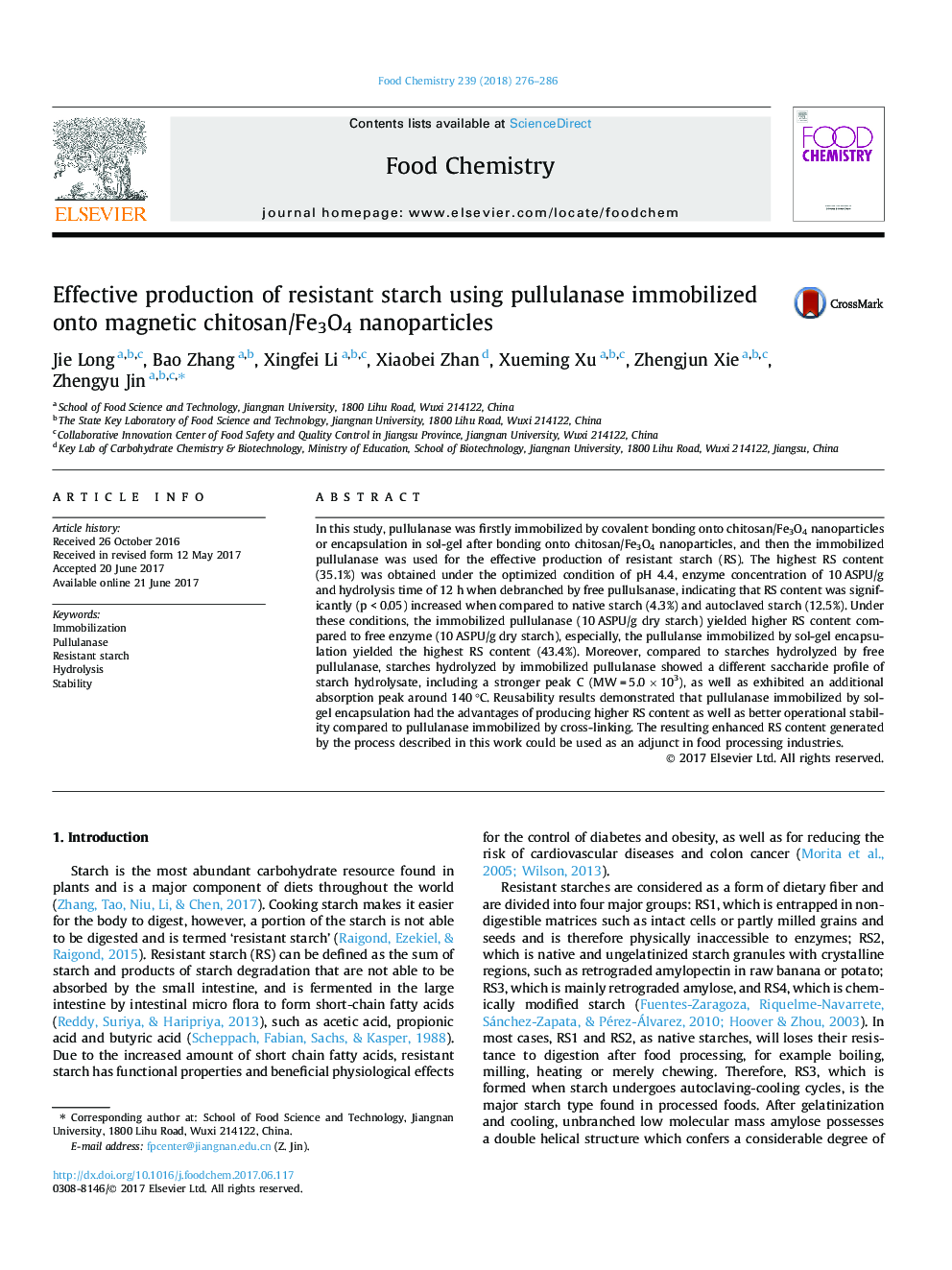| Article ID | Journal | Published Year | Pages | File Type |
|---|---|---|---|---|
| 5132971 | Food Chemistry | 2018 | 11 Pages |
â¢Immobilized pullulanase with high stability was used for the production of RS.â¢High RS content was obtained via optimizing process condition.â¢Debranching effects due to free vs. immobilized pullulanase were compared.â¢Immobilized pullulanase gave higher stability and RS content compared to free enzyme.â¢Operational Stabilities of enzymes immobilized by the two methods were compared.
In this study, pullulanase was firstly immobilized by covalent bonding onto chitosan/Fe3O4 nanoparticles or encapsulation in sol-gel after bonding onto chitosan/Fe3O4 nanoparticles, and then the immobilized pullulanase was used for the effective production of resistant starch (RS). The highest RS content (35.1%) was obtained under the optimized condition of pH 4.4, enzyme concentration of 10 ASPU/g and hydrolysis time of 12 h when debranched by free pullulsanase, indicating that RS content was significantly (p < 0.05) increased when compared to native starch (4.3%) and autoclaved starch (12.5%). Under these conditions, the immobilized pullulanase (10 ASPU/g dry starch) yielded higher RS content compared to free enzyme (10 ASPU/g dry starch), especially, the pullulanse immobilized by sol-gel encapsulation yielded the highest RS content (43.4%). Moreover, compared to starches hydrolyzed by free pullulanase, starches hydrolyzed by immobilized pullulanase showed a different saccharide profile of starch hydrolysate, including a stronger peak C (MW = 5.0 Ã 103), as well as exhibited an additional absorption peak around 140 °C. Reusability results demonstrated that pullulanase immobilized by sol-gel encapsulation had the advantages of producing higher RS content as well as better operational stability compared to pullulanase immobilized by cross-linking. The resulting enhanced RS content generated by the process described in this work could be used as an adjunct in food processing industries.
